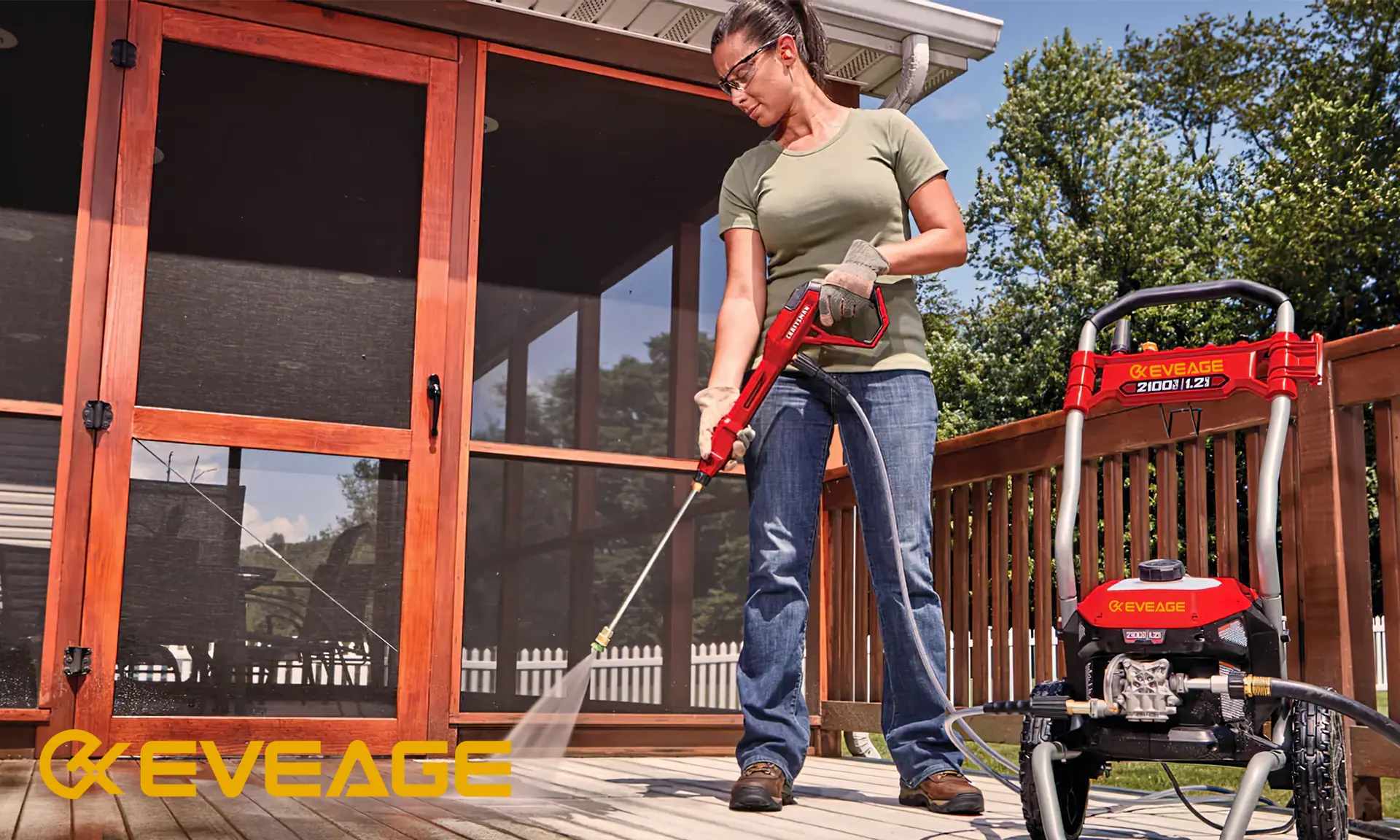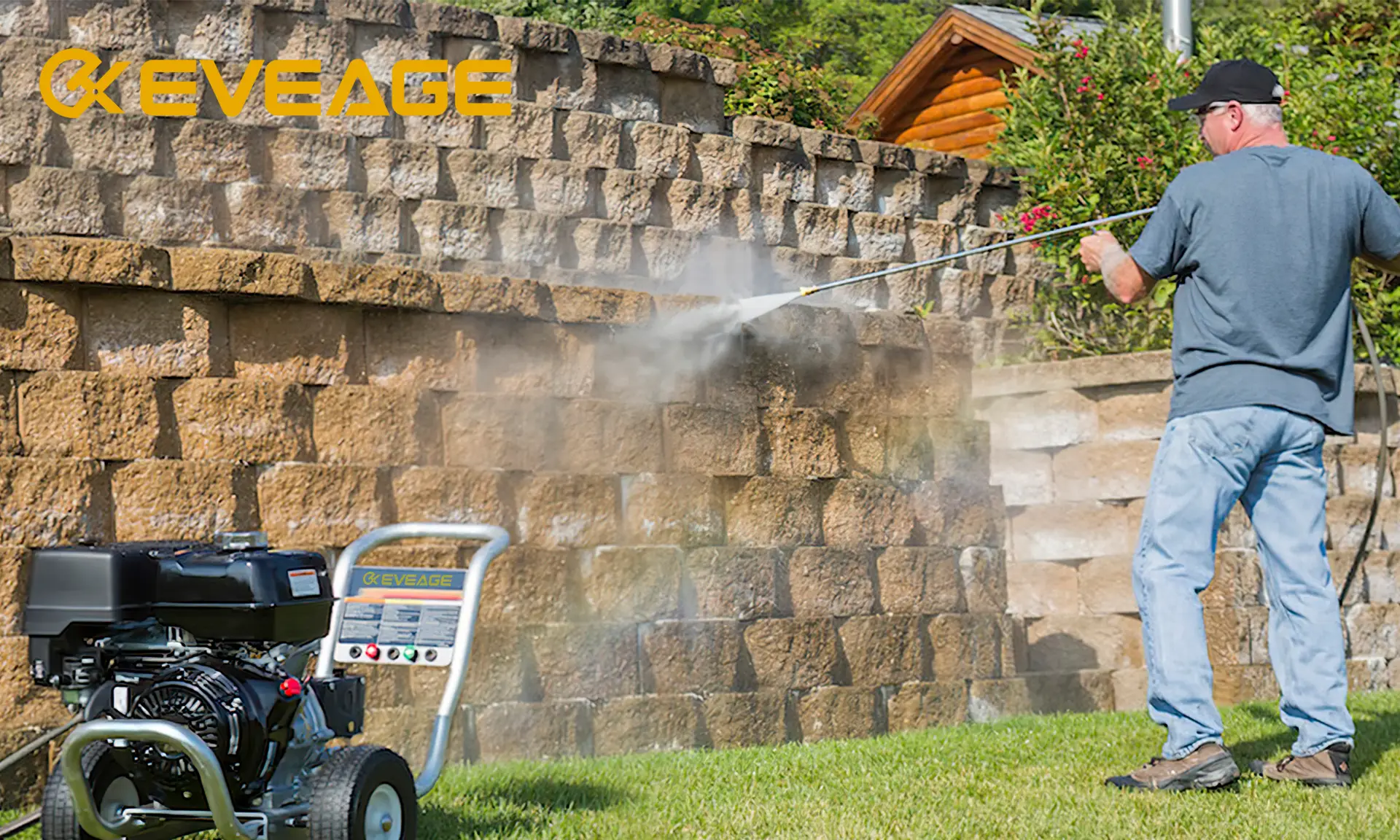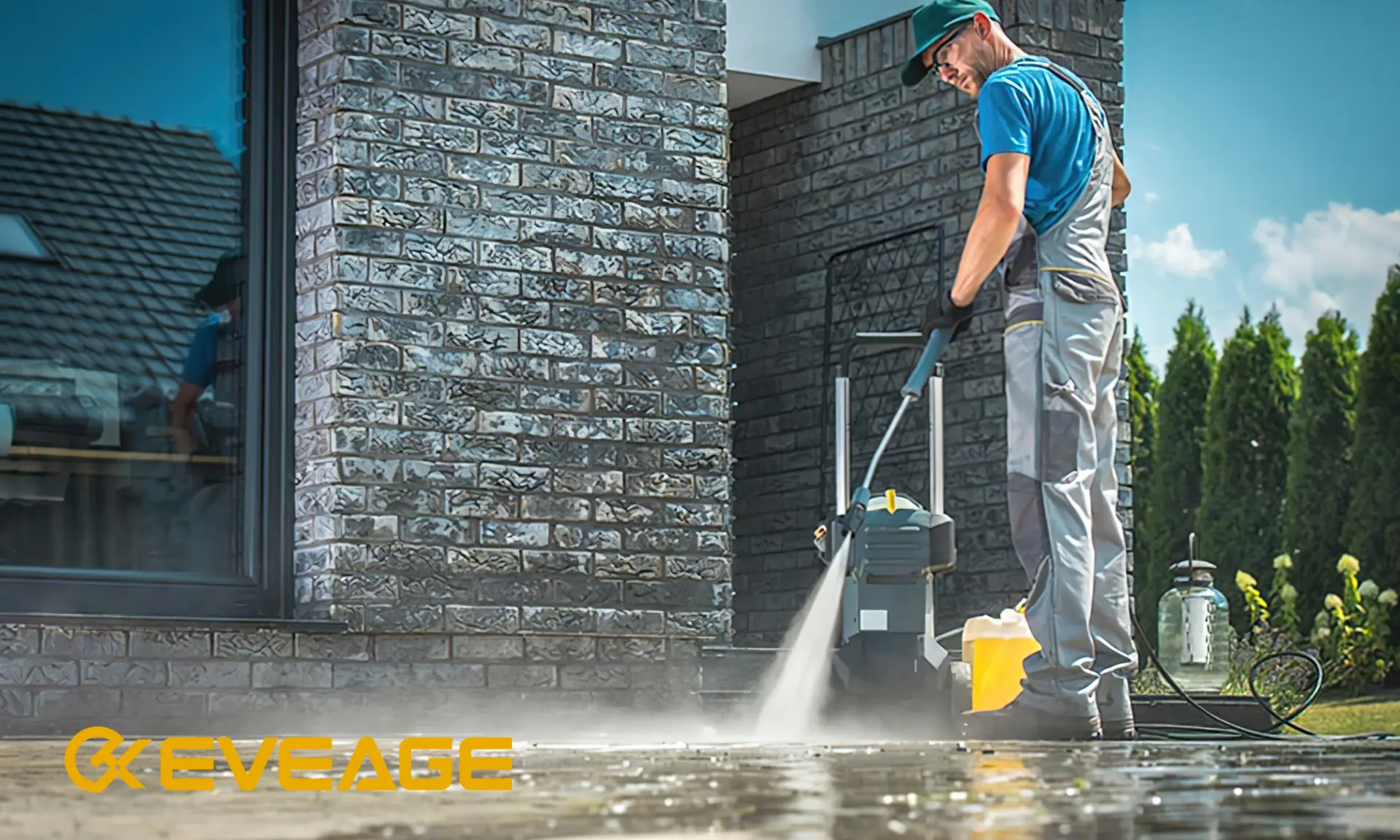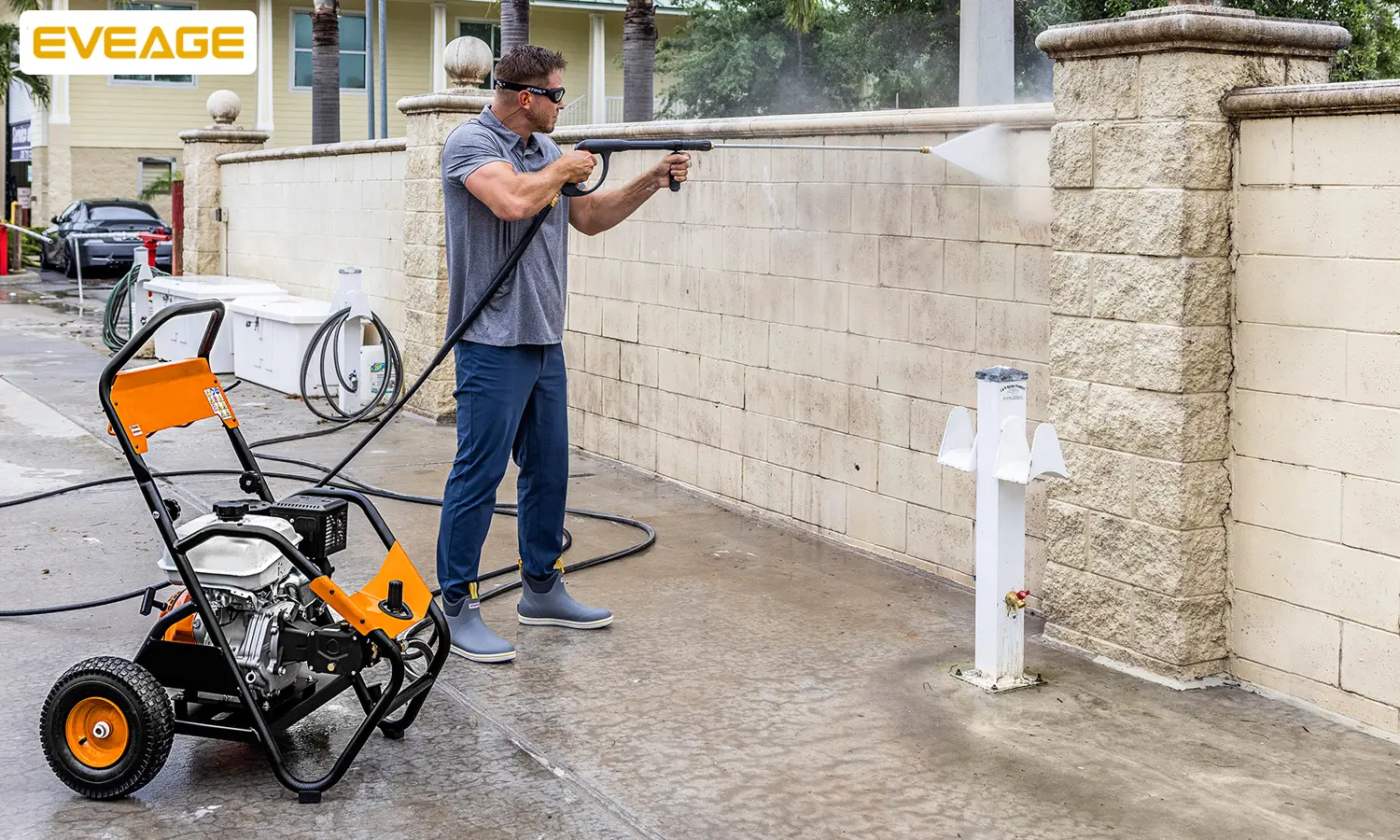Introduction
Pressure washers are great for cleaning decks and patios, but how do you know how much pressure is too much, and what kind of spraying tip should you use? The first thing to consider is whether your deck is wood or composite. Wood has a softer surface than composite decking, so the PSI you’ll want to use will vary:
If your wood is painted or stained, you’ll need an even more gentle touch. Always follow the directions on the pressure washing machine’s owner’s manual. If your decking material is made of composite material (Trex or Timbertech), then apply more pressure without worrying about damaging it. When starting out with a new pressure washing machine, always start with a lower PSI setting than you think you’ll need and work your way up from there…
Pressure washers are great for cleaning decks and patios, but how do you know how much pressure is too much, and what kind of spraying tip should you use?
First, you must understand the importance of pressure when it comes to cleaning your deck or patio. Pressure washers are great for cleaning decks and patios, but how do you know how much pressure is too much? How can you use a pressure washer effectively and safely? Is there such thing as too much power behind my hotse-end sprayer?
The right amount of water pressure will depend on what type of surface you are cleaning and what kind of dirt or grime it has accumulated over time. The trick is finding out just how much force to apply without damaging your property in the process. Using too little water pressure won’t get the job done; using too much could cause damage from overspray or even harm someone who gets hit by an unexpected blast of high-powered water coming from nowhere! You’ll need to experiment with different levels of wattage and different spray tips until you find which one works best for each situation
The first thing to consider is whether your deck is wood or composite.
-
The first thing to consider is whether your deck is wood or composite.
-
Composite decking is more durable and less susceptible to rot than wood, which means it will last longer and require less maintenance. However, it’s also more expensive than traditional wood.
-
If you’re looking for a long-lasting, low-maintenance option for your outdoor space, opt for composite decking.
Wood has a softer surface than composite decking, so the PSI you’ll want to use will vary.
Pressure washers can damage wood and composite decking, but you need to know which material your deck is made of before you start cleaning. Most pressure washers have two settings: low-pressure (1,500 PSI) and high-pressure (3,000 PSI).
-
Wood has a softer surface than composite decking, so the pressure you’ll want to use will vary.
-
Some experts recommend using a medium-to-high setting on the pressure washer when cleaning wood decks. This helps prevent streaking or scratching of the wood grain while removing dirt off the surface.
If your wood is painted or stained, you’ll need an even more gentle touch.
If your wood is painted or stained, you’ll need an even more gentle touch. A pressure washer can strip paint or stain in a matter of seconds, which means that if you’re not careful with your settings, it could all come off before you’ve even finished cleaning the deck. Your best bet is to use a lower PSI setting and a fan spray tip on your pressure washer—but don’t be afraid to experiment! Try using a low pressure setting and see how that works for your deck.
Always follow the directions on the pressure washing machine’s owner’s manual.
Always follow the instructions on the pressure washing machine’s owner’s manual.
You must know how high to pressurize your unit and what PSI setting to use for each type of cleaning job. This information is typically found in the owner’s manual, but if you are unsure about anything, err on the side of caution and ask a professional.
If your decking material is made of composite material, like Trex or Timbertech, you can apply more pressure without worrying about damaging it.
Composite materials are much more durable than wood, and therefore are able to withstand higher pressure washing PSI levels. Additionally, composite material can handle a wider range of temperatures and water pressures. If your decking is made of composite materials such as Trex or Timbertech, you can apply more pressure without worrying about damaging it.
When starting out with a new pressure washing machine, always start with a lower PSI setting than you think you’ll need and work your way up from there.
When starting out with a new pressure washing machine, always start with a lower PSI setting than you think you’ll need and work your way up from there. You can always increase the PSI (pressure) setting, but you can’t reduce it. While it is tempting to start out at the maximum power level, this will cause excessive damage to your deck or patio surface because it’s so powerful that it will blow holes in the wood and stone. The trick is to find the right balance between too little pressure that doesn’t clean well enough and too much that causes damage.
You will know when you have found this balance if the dirt comes off easily without leaving streaks, which indicates that there was not enough pressure applied; or if there are still stubborn stains left after cleaning then maybe trying increasing PSI slightly more next time until they come off completely
Depending on the brand of machine and nozzle you’re using, an effective spray tip will be between 0º and 30º.
The spray tip is the part of the wand that sprays water out of your hose. It can be made from plastic or metal, and there are many different shapes and sizes available.
The basic concept is that a wider fan will clean faster than a narrower one, but it won’t leave behind as much dirt in its wake when you’re done cleaning. You’ll also want to make sure that your deck is completely dry before attempting to stain it again; otherwise, you’ll risk staining both surfaces at once: The dirt will stick on top of wet wood while still being dirty enough to show through when dry again
A fan-shaped spray pattern that’s wider than about 50 degrees will not get into cracks and crevices effectively.
A fan-shaped spray pattern that’s wider than about 50 degrees will not get into cracks and crevices effectively. If your deck or fence is particularly dirty, you may want to use a 25 degree spray tip, as it provides a more focused stream of cleaning solution.
A 25 degree spray tip generally works well for cleaning decks and fences.
A 25 degree spray tip generally works well for cleaning decks and fences. A 50 degree spray tip is good for cleaning siding, brick and concrete.
If you need to clean a large area with your pressure washer, it may be best to use a longer wand or extension wand (adds about 5 feet of distance).
If you’re using the right spray tip and PSI but are still not getting dirt off of your deck surfaces, try moving the wand closer to the surface or farther away until you see suds appear.
If you’re using the right spray tip and PSI but are still not getting dirt off of your deck surfaces, try moving the wand closer to the surface or farther away until you see suds appear. Moving the wand closer to the surface will help you get into cracks and crevices, while moving it farther away will allow for more fluid mopping.
Conclusion
The bottom line is that pressure washers are a great tool for cleaning your deck and patio. They’re easy to use, environmentally friendly and do a good job at removing dirt from any surface. But if you don’t have the right PSI setting or spray tip on your machine, it won’t get the job done. So make sure that before you start scrubbing away with soap or bleach-based cleaners (which can damage wood surfaces), take some time to consider what type of material your decking is made out of so you know how much pressure it needs to withstand while still being safe for use around plants and animals who might be nearby when using these machines





